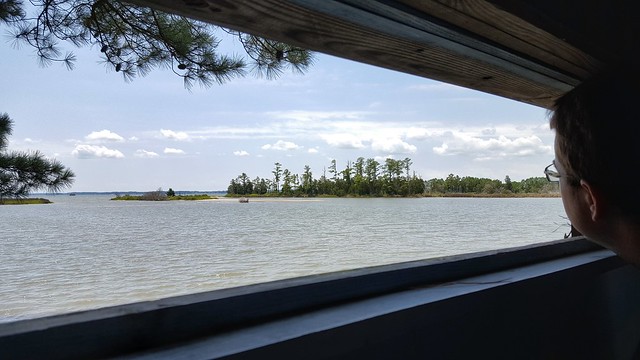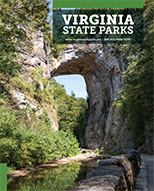Read Our Blogs
Watch Your Head, Birds Are Passing Over You
There’s something about autumn that emanates much needed change. Perhaps it’s the pumpkin spice edibles hitting shelves, or the leaves turning beautiful oranges and reds, or just the well-deserved refuge from unforgiving temperatures.
For many nature lovers, it is the spectacular and arduous journey that millions of birds undertake to their wintering homes that revives that new, refreshed feeling of autumn. Here is part of that journey as observed from Virginia State Parks.
A flock of migratory birds in a farm field at a Virginia State Park
White-throated Sparrow, a common migrant found in Virginia all winter
Some can recall seeing thousands of geese in a field, beaches covered in speedy sandpipers, power lines concealed by blackbirds. Numerous agencies like us such as US Fish & Wildlife Service, etc. seek to bring this seemingly mysterious behavior to the forefront of the public eye since bird migration is much more complex than you may realize.
As a naturalist for Virginia State Parks, I personally want to share with you
Why birds are superheroes of the natural world.
Thus, I have taken on several FAQ’s of bird migration:
Come sit with us and learn about our journey
1) What is migration?
It is the annual large-scale movement of birds between their summer homes (breeding grounds) and winter homes (non-breeding grounds). They move to take advantage of better resources once conditions become unfavorable, such as diminishing food and colder temperatures, in hopes of raising the most successful clutch possible.
2) So how do they do it?
As the amount of daylight changes each season, birds become increasingly restless and begin preparing for their long journeys by eating more frequently and storing lots of fat. When day length dictates it’s time to migrate, the birds navigate using landmarks (mountains, water, vast forest, conspicuous man-made structures, etc), positioning of the stars and sun, and sensing the Earth’s magnetic field. Traveling mostly at night, birds take into consideration weather, available food sources, and routes traveled from previous years.
Can you spot the Common Yellowthroat looking for food around the marsh?
3) When do they have time to eat?
Once birds become too famished and fatigued to continue their journey, they search for a “stopover site”, which typically provides abundant food/water, a suitable shelter, protection from predators, and little competition. Stopover sites are critical for replenishing energy and allow the birds to rest for anywhere from several hours to several weeks.
4) What about sleeping?
Many bird species take numerous ‘power naps’ each day on land with one eye open, lasting anywhere from several seconds to several minutes at a time. It is similar to mid-day drowsiness, where one or both eyes are open but you enter into ‘light sleep’. Interestingly, birds can also sleep mid-flight.
In a recent article examining mid-flight sleep, it was supported in Great Frigatebirds (Fregata minor) that they do in fact sleep with one eye open, utilizing either one hemisphere or both hemispheres in the brain to remain alert (Rattenborg et al., 2016). The results discussed that ecological demands to remain awake across many migrating species outweighs the need to sleep for long periods of times, and that sleeping small amounts of time on the wing help to forego the need to sleep longer periods until they return to land (Rattenborg et al., 2016).
Not only songbirds migrate – raptors, shorebirds, waterfowl, etc. migrate too!
5) What is a fallout?
When birds encounter a storm or strong headwinds, sometimes mass amounts of migrants collect in tiny hotspots with ample food and shelter in what’s known as a “fallout”. This includes places like the Florida Keys, Cape May (NJ), Point Reyes (CA), and the Eastern Shore of Virginia. It is important that fallouts remain uninterrupted by human interference, as these migrants need their rest. If you live in a known hotspot or IBA (Important Bird Area), having feeders out will make a difference in seeing less fatalities from complete exhaustion.
Speaking of IBA’s, did you know that Virginia has numerous IBA’s that are of global, continental, and state-wide importance? Many of these IBA’s have vital bird habitats that overlap state parks like Mason Neck, Leesylvania, Caledon, False Cape, Kiptopeke, and James River to name a few. Take a look at this screenshot below of Virginia’s IBA’s:
Virginia has a great amount of IBA’s in comparison with other states
6) Is anything being done to conserve migrating birds in other parts of the world similar to conservation work in the US?
Several Central and South American countries have teamed up with the Audubon Society’s International Alliances Program, which seeks to promote bird-based ecotourism in numerous IBA’s that migrant birds utilize on their journeys. Programs such as Ecotourism in the Bahamas develop the capacity for locals to become guides and educate their communities on the importance of birds in their countries and associated tourism benefits to their economies. It simultaneously promotes biodiversity conservation and stimulates economic development in the Americas. This is just one of many examples.
7) Who can I expect passing by?
Check out the Cornell Lab of Ornithology’s Bird Cast website, which offers detailed forecasts each week of migrants headed your way. It includes the expected time of arrival and departure for hundreds of species, all thanks to citizen scientists and bird watchers like you submitting sightings on the internationally recognized database, eBird.
 Belle Isle State Park offers a bird blind to quietly observe the migratory birds
Belle Isle State Park offers a bird blind to quietly observe the migratory birds
We have already seen Black-and-white Warblers, Prairie Warblers, American Redstarts, White-eyed Vireos and others passing through Mason Neck State Park, so be on the lookout for what birds may be in your area right now. Happy birding!
Rattenborg, N.C., Voirin, B., Cruz, S.M., Tisdale, R., Dell’Omo, G., Lipp, H.P., Wikelski, M. & Vyssotski, A.L. (2016). Evidence that birds sleep in mid-flight. Nature Communications, 7. doi:10.1038/ncomms12468
If you have read the article and have a question, please email nancy.heltman@dcr.virginia.gov.




















